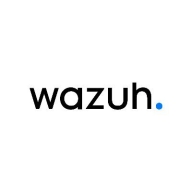

ESET PROTECT Enterprise and Wazuh compete in the cybersecurity sector, focusing on endpoint protection and network security. ESET has a slight advantage due to its comprehensive security features and support services, while Wazuh offers cost-effective solutions with its open-source platform.
Features: ESET PROTECT Enterprise includes advanced security management, zero-day protection, and a robust dashboard to enhance endpoint security and ease of configuration, making it highly efficient without hardware upgrades. Wazuh offers extensive logging, integration capabilities, and features like SIEM and compliance management, with a focus on flexibility and customizations for cloud environments.
Room for Improvement: ESET PROTECT Enterprise could minimize resource usage and refine its EDR capabilities for better scalability. Improvements in cloud integration and mobile management would enhance its offerings. Wazuh requires better threat intelligence and improved Unix support, with configuration complexity posing a challenge. Simplification and AI integration could significantly boost its efficiency.
Ease of Deployment and Customer Service: ESET PROTECT Enterprise is adaptable for on-premises and hybrid deployments, receiving consistent praise for its responsive customer support. Wazuh, while flexible in deployment, necessitates significant customization, affecting user experience. Its customer service is less comprehensive compared to ESET, potentially increasing costs for support services.
Pricing and ROI: ESET PROTECT Enterprise offers substantial ROI through reliable security features, though not the cheapest in the market. It's seen as cost-effective compared to alternatives like CrowdStrike. Wazuh appeals to cost-sensitive organizations with its open-source availability and absence of licensing fees, but additional expenses may arise from infrastructure and support needs.
The return on investment is excellent due to its functionality and ease of installation.
There was money saving from using ESET PROTECT Enterprise, which is why I switched from CrowdStrike to ESET.
I have seen value in security cost savings with Wazuh, as using proprietary EDR versions could save us substantial money.
The tech support from ESET is amazing, and I would rate it as ten out of ten.
They are very responsive and help in solving issues quickly.
Even if support is addressing my problem, if the two issues I mentioned are not resolved, then the support process is not complete.
They responded quickly, which was crucial as I was on a time constraint.
We use the open-source version of Wazuh, which does not provide paid support.
The documentation is good and provides clear instructions, though it's targeted at those with technical backgrounds.
It can efficiently scale up to thousands of devices in an organization without issues.
I have used many products before, and this solution is definitely scalable.
It is better suited for workstations rather than server environments.
It can accommodate thousands of endpoints on one instance, and multiple instances can run for different clients.
Currently, I don't see any limitations in terms of scalability as Wazuh can still connect many endpoints.
Scalability depends on the configuration and the infrastructure resources like compute and memory we allocate.
When it performs an update, ESET PROTECT Enterprise should request permission for restarting because otherwise, users lose their work.
The solution is stable, and I have not encountered any glitches.
The solution is very, very stable.
The stability of Wazuh is strong, with no issues stemming from the solution itself.
The stability of Wazuh is largely dependent on maintenance.
The indexer frequently times out, requiring system restarts.
Sometimes, agents lose connection with the management console, and the administration team needs to reinstall the agents on the computers.
They need to reduce the number of notifications on the endpoints.
It takes a lot of processing power when the machine is initially booted.
Machine learning is needed along with understanding user behavior and behavioral patterns.
The integration modules are insufficiently developed, necessitating the creation of custom integration solutions using tools like Logstash and PubSub.
I think Wazuh should improve by introducing AI functionalities, as it would be beneficial to see AI incorporated in the threat hunting and detection functionalities.
I pay 40 dollars per agent annually, which is cheaper than 60 dollars per agent for Check Point.
We recently paid fourteen dollars and thirty-six cents per unit for 20 users, which is reasonable.
Comparing it to other solutions in the market, it was slightly higher.
Wazuh is completely free of charge.
I would definitely recommend Wazuh, especially considering Fortinet's licensing model which is confusing and overpriced in my opinion.
Totaling around two lakh Indian rupees per month.
It allows simple whitelisting and has a learning mode for new installations, which reduces false positives by adapting to typical user habits.
Its web component prevents infections from malicious websites, which enhances its anti-malware capabilities.
One of the strong features of ESET PROTECT Enterprise is its ability to work well on old computers.
Wazuh is a SIEM tool that is highly customizable and versatile.
The system allows us to monitor endpoints effectively and collect security data that can be utilized across other platforms such as SOAR.
With this open source tool, organizations can establish their own customized setup.
| Product | Market Share (%) |
|---|---|
| Wazuh | 9.6% |
| ESET PROTECT Enterprise | 1.0% |
| Other | 89.4% |


| Company Size | Count |
|---|---|
| Small Business | 11 |
| Midsize Enterprise | 2 |
| Large Enterprise | 2 |
| Company Size | Count |
|---|---|
| Small Business | 26 |
| Midsize Enterprise | 15 |
| Large Enterprise | 8 |
ESET PROTECT Enterprise ensures real-time visibility for all endpoints as well as full reporting and security management for all OSes
Wazuh offers comprehensive security features like MITRE ATT&CK correlation, log monitoring, and cloud-native infrastructure. It ensures compliance and provides intrusion detection with high scalability and open-source flexibility, ideal for businesses seeking robust SIEM capabilities.
Wazuh stands out in security information and event management by providing efficient log aggregation, vulnerability scanning, and event correlation against MITRE ATT&CK. Its capability to integrate seamlessly with environments, manage compliance, and monitor files makes it suitable for cloud-native infrastructures and financial sectors. Despite its technical support needing enhancement and opportunities for improving AI integration and threat intelligence, its open-source nature and cost-effectiveness make it appealing. Users can leverage custom dashboards powered by Elasticsearch for precise data analysis, even though there is a desire for a more user-friendly interface and better enterprise solution integration. Deployment may be complex, but its features contribute significantly to fortified security postures.
What are the essential features of Wazuh?Industries like finance and cloud infrastructure heavily utilize Wazuh for its security strengths. By monitoring endpoints and ensuring compliance with frameworks, companies can improve security posture and swiftly detect anomalies. The platform's focus on event correlation and alerts for security incidents is particularly beneficial.
We monitor all Extended Detection and Response (XDR) reviews to prevent fraudulent reviews and keep review quality high. We do not post reviews by company employees or direct competitors. We validate each review for authenticity via cross-reference with LinkedIn, and personal follow-up with the reviewer when necessary.